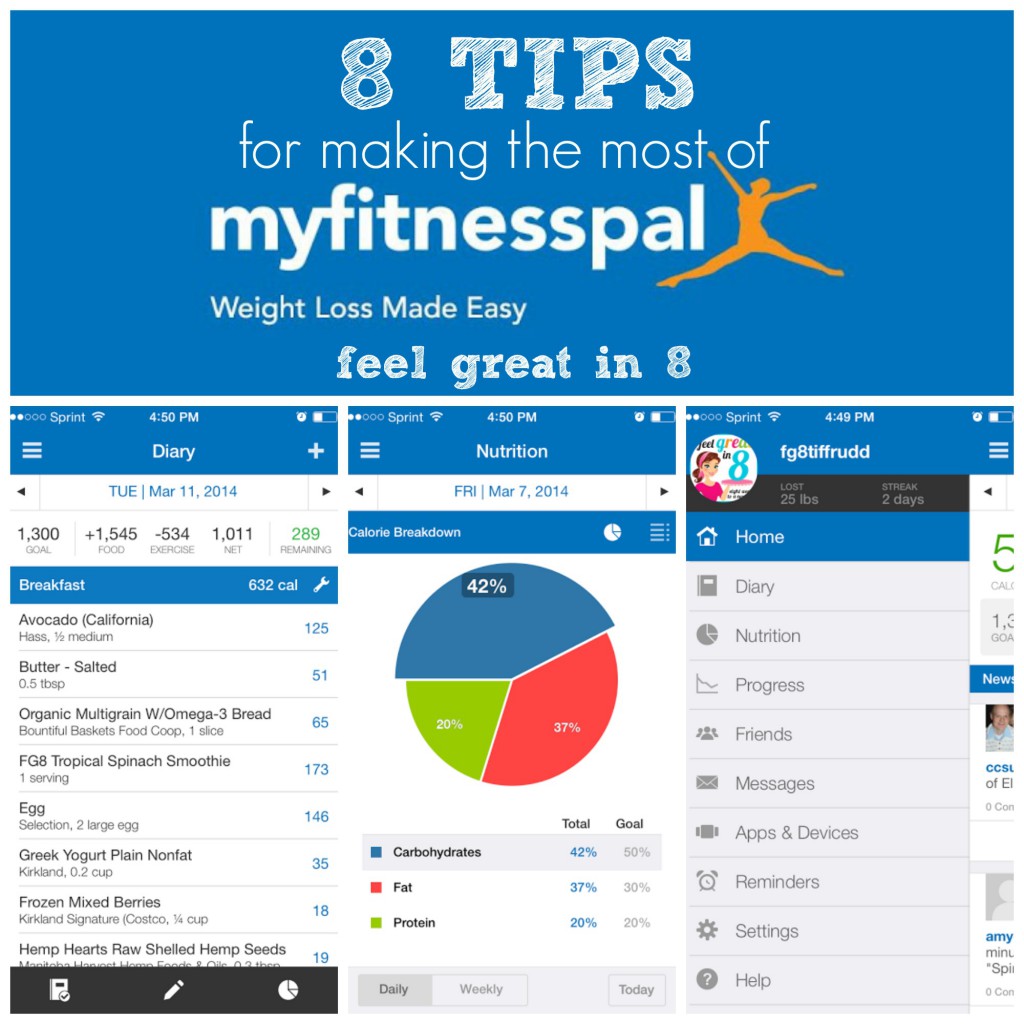
Weight Loss Hacks From MyFitnessPal Users
Weight Loss Hacks From MyFitnessPal Users: Want to lose weight but feel overwhelmed by all the conflicting advice out there? You’re not alone. Many people turn to MyFitnessPal for guidance and support, and the platform is teeming with valuable insights from real users who have achieved their weight loss goals.
In this blog post, we’ll dive into the weight loss strategies, tips, and hacks that MyFitnessPal users have found successful, exploring everything from calorie tracking and meal planning to exercise routines and finding motivation.
From the most popular weight loss strategies to overcoming common challenges, we’ll uncover the secrets behind successful weight loss journeys. Whether you’re just starting your weight loss journey or looking for new ways to stay motivated, this post offers practical advice and inspiration from the MyFitnessPal community.
Popular Weight Loss Strategies from MyFitnessPal Users

MyFitnessPal is a popular platform for tracking food intake and exercise, and it’s a hub for users to share their weight loss journeys and strategies. The platform’s vibrant community offers a wealth of insights and advice, with users often discussing the most effective methods for shedding pounds.
This article explores some of the most common weight loss strategies shared by MyFitnessPal users, analyzing their frequency and potential benefits and drawbacks.
One of the most popular weight loss hacks I’ve seen on MyFitnessPal is incorporating more salads into your diet. Salads can be incredibly satisfying and filling, especially when you get creative with your toppings. For some seriously delicious and healthy salad inspiration, check out this awesome article on diets and recipes for meal worthy salads.
After trying out some of these recipes, I’m sure you’ll be adding salads to your own MyFitnessPal meal plans in no time!
Calorie Counting and Tracking
Calorie counting is a cornerstone of weight loss for many MyFitnessPal users. It involves meticulously tracking every calorie consumed and burned to create a calorie deficit, the foundation of weight loss. Users often discuss the effectiveness of calorie tracking in raising awareness of their eating habits and helping them make informed choices about their food intake.
- Benefits:Increased awareness of calorie consumption, improved food choices, potential for achieving a calorie deficit.
- Drawbacks:Time-consuming, potential for obsessive tracking, risk of developing disordered eating habits.
Intermittent Fasting
Intermittent fasting, a weight loss strategy that involves alternating periods of eating and fasting, is gaining popularity among MyFitnessPal users. The platform provides a forum for users to share their experiences with different fasting protocols, such as the 16/8 method or the 5:2 diet.
- Benefits:Potential for weight loss, improved insulin sensitivity, and reduced inflammation.
- Drawbacks:Potential for hunger and fatigue, not suitable for everyone, especially individuals with certain medical conditions.
Macro Tracking
Macro tracking involves monitoring the intake of macronutrients, such as carbohydrates, protein, and fat. MyFitnessPal users often discuss the importance of adjusting macro ratios to achieve their weight loss goals.
- Benefits:Potential for achieving specific dietary goals, improved body composition, and increased satiety.
- Drawbacks:Can be complex and time-consuming, potential for restrictive eating, and may not be suitable for everyone.
Regular Exercise
MyFitnessPal users emphasize the importance of incorporating regular exercise into their weight loss routines. The platform provides tools for tracking workouts and allows users to connect with fitness trackers and apps.
- Benefits:Increased calorie expenditure, improved cardiovascular health, enhanced mood and energy levels.
- Drawbacks:Requires time commitment, potential for injury, and may not be accessible to everyone.
Mindful Eating
Mindful eating is a strategy that encourages users to pay attention to their food choices and eating habits. MyFitnessPal users often discuss the benefits of slowing down during meals, savoring flavors, and avoiding distractions while eating.
- Benefits:Increased awareness of hunger and fullness cues, improved digestion, and reduced overeating.
- Drawbacks:Requires effort and practice, may not be effective for everyone, and can be challenging in social settings.
Tracking and Monitoring Habits
Many MyFitnessPal users have found success in their weight loss journeys by diligently tracking their food intake and exercise. This meticulous approach provides valuable insights into their daily habits, empowering them to make informed decisions for sustainable weight management.
Benefits of Tracking Calories and Macros, Weight loss hacks from myfitnesspal users
Tracking calories and macros offers a comprehensive understanding of dietary patterns, enabling users to make conscious choices about their food intake.
- By recording every calorie consumed, users gain a clear picture of their daily energy balance, which is crucial for weight loss. A calorie deficit, where calorie intake is less than calorie expenditure, is essential for shedding pounds.
- Tracking macronutrients (proteins, carbohydrates, and fats) provides insights into the nutritional composition of their diet. This knowledge allows users to adjust their food choices to meet their specific macronutrient goals, often tailored to their fitness objectives and dietary preferences.
Role of Technology and Apps in Habit Tracking
Technology plays a significant role in simplifying and enhancing habit tracking. Apps like MyFitnessPal provide user-friendly platforms for recording meals, exercise sessions, and other lifestyle factors.
I’ve been diving into the world of weight loss hacks from MyFitnessPal users, and one thing that keeps coming up is the importance of staying motivated. Keeping workouts fresh and engaging is key, and that’s where 8 fun ways to avoid home workout boredom comes in.
I’m definitely going to try some of those tips – I’m sure they’ll help me stay on track with my fitness goals and keep the weight loss journey fun!
- These apps often feature barcode scanning capabilities, making it effortless to log food items.
- They also offer extensive food databases, providing accurate nutritional information for a wide range of foods.
- Many apps allow users to set personalized goals, track progress, and receive motivational support.
Nutrition and Meal Planning
Navigating the world of weight loss can feel overwhelming, but MyFitnessPal users have found success by focusing on nutrition and meal planning. They understand that sustainable weight loss isn’t about quick fixes or fad diets but rather about making lasting changes to their eating habits.
Common Dietary Approaches
MyFitnessPal users often adopt dietary approaches that emphasize whole, unprocessed foods, balanced macronutrients, and mindful eating.
- Calorie Counting:A fundamental approach, users track their calorie intake to ensure they consume fewer calories than they burn. This helps create a calorie deficit, essential for weight loss.
- Intermittent Fasting:This approach involves cycling between periods of eating and fasting. Popular methods include the 16/8 method (fasting for 16 hours and eating within an 8-hour window) and the 5:2 method (eating normally for 5 days and restricting calories for 2 days).
- Mediterranean Diet:Emphasizing fruits, vegetables, whole grains, legumes, nuts, and olive oil, this diet pattern is associated with improved heart health and weight management.
- Ketogenic Diet:This high-fat, low-carbohydrate diet forces the body to burn fat for energy. While effective for weight loss, it requires careful planning and monitoring.
Examples of Effective Meal Plans
MyFitnessPal users share meal plans that align with their dietary choices, often incorporating recipes and tips for meal prepping.
- High-Protein Breakfast:Starting the day with a high-protein breakfast can help keep you feeling full and satisfied throughout the morning, preventing cravings and overeating later. Examples include Greek yogurt with berries and nuts, scrambled eggs with whole-wheat toast, or a protein smoothie with spinach and fruit.
- Balanced Lunch:A balanced lunch should include a combination of protein, carbohydrates, and healthy fats. Examples include a salad with grilled chicken or fish, lentil soup with whole-grain bread, or a turkey sandwich on whole-wheat bread.
- Nutrient-Rich Dinner:Dinner is a great opportunity to enjoy a satisfying meal that supports your weight loss goals. Examples include baked salmon with roasted vegetables, chicken stir-fry with brown rice, or vegetarian chili with cornbread.
Importance of Balanced Nutrition and Portion Control
Balanced nutrition and portion control are key components of sustainable weight loss.
- Balanced Nutrition:Ensuring that your meals and snacks provide a balance of macronutrients (protein, carbohydrates, and fats) is crucial for optimal health and weight management.
- Portion Control:Learning to estimate portion sizes and practice mindful eating can help you avoid overeating and manage your calorie intake effectively.
Exercise and Activity
MyFitnessPal users are a testament to the fact that weight loss isn’t solely about what you eat, but also how much you move. They recognize the importance of exercise as a crucial component of their weight loss journey.
Types of Exercise
MyFitnessPal users incorporate a diverse range of exercises into their routines, reflecting their individual preferences and goals.
- Cardiovascular Exercise:Cardio exercises like running, swimming, cycling, and dancing are popular choices for burning calories and improving cardiovascular health. These activities elevate heart rate and increase oxygen intake, leading to significant calorie expenditure.
- Strength Training:Resistance training, including weightlifting, bodyweight exercises, and resistance bands, is embraced by many MyFitnessPal users. This type of exercise builds muscle mass, which boosts metabolism and helps burn more calories even at rest.
- High-Intensity Interval Training (HIIT):HIIT workouts involve short bursts of intense exercise followed by brief recovery periods. This approach is highly effective for burning calories and improving cardiovascular fitness.
- Yoga and Pilates:These practices combine physical movement with mindfulness, offering a holistic approach to fitness. Yoga and Pilates improve flexibility, balance, and core strength, which are essential for overall well-being.
Exercise Frequency and Weight Loss
The frequency of exercise is a significant factor in weight loss success. While there’s no one-size-fits-all answer, research suggests that consistent exercise is key.
- Consistency is Crucial:Studies indicate that individuals who engage in regular exercise, even at moderate intensity, are more likely to achieve and maintain weight loss than those who exercise sporadically.
- Frequency and Intensity:The optimal frequency and intensity of exercise vary depending on individual goals, fitness levels, and health conditions. A general recommendation is to aim for at least 150 minutes of moderate-intensity aerobic activity or 75 minutes of vigorous-intensity aerobic activity per week.
- Listen to Your Body:It’s essential to listen to your body and gradually increase exercise intensity and duration. Rest and recovery are crucial for preventing injuries and promoting long-term fitness.
Exercise and Muscle Building
Exercise, particularly strength training, plays a pivotal role in building muscle mass.
- Muscle Growth:Resistance training creates microscopic tears in muscle fibers, which trigger a repair process that results in muscle growth.
- Increased Metabolism:Muscle tissue burns more calories at rest than fat tissue. Building muscle through exercise can therefore increase your metabolism, making it easier to maintain a healthy weight.
- Improved Body Composition:By increasing muscle mass and reducing body fat, exercise helps improve body composition, leading to a leaner and more toned physique.
Exercise and Metabolism
Exercise, particularly aerobic activity, can have a significant impact on metabolism.
- Increased Calorie Burn:Exercise directly burns calories during the activity itself.
- Post-Exercise Calorie Burn:Exercise can also lead to an increase in metabolism for several hours after the workout is complete, known as the “afterburn effect.”
- Hormonal Changes:Exercise can influence hormone levels, including those involved in regulating metabolism. For example, exercise can increase levels of thyroid hormone, which plays a role in regulating metabolism.
Motivation and Support: Weight Loss Hacks From Myfitnesspal Users
The journey to weight loss is often challenging, requiring a blend of determination, discipline, and support. MyFitnessPal users have discovered a variety of strategies to stay motivated and find encouragement along the way. These techniques range from setting personal goals and tracking progress to connecting with online communities and seeking support from friends and family.
Motivation Strategies
MyFitnessPal users have identified various motivational strategies that help them stay committed to their weight loss goals. These strategies are often personalized and evolve over time as individuals learn what works best for them.
- Setting Realistic Goals: MyFitnessPal users often emphasize the importance of setting realistic and achievable goals. Rather than aiming for drastic weight loss in a short period, they focus on gradual, sustainable changes. Setting smaller, achievable goals, such as losing 1-2 pounds per week, helps maintain motivation and prevent feelings of overwhelm.
- Tracking Progress and Celebrating Milestones: Regularly tracking progress is a powerful motivator for many MyFitnessPal users. They find satisfaction in seeing their efforts reflected in the numbers. Celebrating milestones, no matter how small, provides a sense of accomplishment and reinforces the commitment to their goals.
- Finding Inspiration in Success Stories: Reading and sharing success stories within the MyFitnessPal community can be a powerful source of inspiration. These stories demonstrate that weight loss is possible and that others have overcome similar challenges. They provide hope and encouragement, reminding users that they are not alone in their journey.
- Rewarding Themselves: MyFitnessPal users often use rewards as a way to stay motivated. These rewards can be anything from a new workout outfit to a special meal out. The key is to choose rewards that are meaningful and motivating for the individual.
Support Systems and Communities
MyFitnessPal users have found that support systems and communities play a crucial role in their weight loss journey. These connections provide encouragement, accountability, and a sense of belonging.
- Online Communities: MyFitnessPal itself offers a vibrant online community where users can connect, share experiences, and offer support to one another. These communities provide a platform for users to ask questions, share successes, and find encouragement from others who understand their challenges.
- Support Groups: Many MyFitnessPal users participate in online or in-person support groups focused on weight loss. These groups provide a safe space to share struggles, celebrate achievements, and learn from others. The shared experience of weight loss can be a powerful motivator.
I’ve been diving into the MyFitnessPal community lately, soaking up all the weight loss hacks from fellow users. One common theme I’ve noticed is the struggle with meal prep plateaus. If you’re feeling stuck in a rut with your meal prep routine, check out 6 proven ways to get out of a meal prep plateau for some fresh ideas.
I’m excited to try some of these tips myself and see if I can level up my meal prep game!
- Friends and Family: Having the support of friends and family is invaluable in the weight loss journey. Sharing goals and progress with loved ones can provide encouragement and accountability. It’s important to surround yourself with people who are supportive and understanding of your efforts.
Accountability and Encouragement
Accountability and encouragement are essential components of successful weight loss. MyFitnessPal users have found that these factors can significantly impact their motivation and commitment.
- Setting Goals with Friends: MyFitnessPal allows users to connect with friends and set shared goals. This feature encourages friendly competition and provides a sense of accountability. Having a friend or family member working towards similar goals can create a supportive and motivating environment.
- Sharing Progress Updates: Regularly sharing progress updates with friends, family, or within online communities can provide a sense of accountability and encourage positive reinforcement. Sharing successes and challenges helps users stay focused and motivated.
- Seeking Professional Guidance: Some MyFitnessPal users find it beneficial to work with a personal trainer, nutritionist, or therapist. These professionals can provide personalized guidance, support, and accountability, helping individuals stay on track and achieve their goals.
Challenges and Obstacles

The journey to weight loss is rarely a smooth one. MyFitnessPal users, like many others, encounter a range of challenges that can derail their progress and test their resolve. Understanding these common obstacles is crucial for developing effective strategies to overcome them and maintain motivation.
Common Challenges Faced by MyFitnessPal Users
Recognizing these challenges is the first step towards finding solutions. Here are some of the most frequently encountered hurdles:
- Plateaus:Weight loss plateaus occur when progress stalls despite consistent effort. This can be discouraging and lead to feelings of frustration.
- Cravings and Emotional Eating:Emotional eating, triggered by stress, boredom, or other emotions, can sabotage weight loss efforts.
- Lack of Time and Consistency:Maintaining a healthy lifestyle requires time and consistency, which can be challenging in busy schedules.
- Social Events and Dietary Temptations:Social gatherings and events often involve tempting foods that can derail dietary plans.
- Lack of Support:Having a supportive network of friends, family, or a fitness community can significantly boost motivation and accountability.
- Self-Sabotage:Sometimes, negative self-talk or unrealistic expectations can lead to self-sabotage, undermining weight loss efforts.
Strategies for Overcoming Challenges
The good news is that these challenges can be overcome with the right strategies and mindset:
- Embrace Patience and Persistence:Weight loss is a gradual process. Be patient with yourself and understand that setbacks are normal.
- Track Progress and Celebrate Small Victories:Track your progress, focusing on positive changes in body composition, energy levels, and overall well-being.
- Develop Healthy Coping Mechanisms:Identify triggers for emotional eating and develop alternative coping mechanisms, such as exercise, journaling, or spending time with loved ones.
- Plan Ahead for Social Events:Prepare for social events by making healthy choices in advance and having a plan for dealing with temptations.
- Seek Support and Accountability:Join online communities or support groups, or find a fitness buddy to provide motivation and accountability.
- Practice Self-Compassion:Be kind to yourself, acknowledge your efforts, and forgive yourself for occasional slip-ups.
The Importance of Patience, Persistence, and Self-Compassion
Weight loss is a journey, not a race. It’s essential to approach it with patience, persistence, and self-compassion.
“Patience is not passive resignation, nor is it fatalistic acceptance. It is the active and conscious decision to look beyond the current difficulty and see the bigger picture. It is the quiet confidence that, even though things are tough now, they will eventually get better. It is the willingness to hold on, even when all seems lost.”
Brian Tracy
Remember that setbacks are inevitable. Don’t let them discourage you. Instead, learn from them, adjust your approach, and keep moving forward.
Success Stories and Transformations
The MyFitnessPal community is filled with inspiring stories of individuals who have achieved significant weight loss, transforming their lives and achieving their fitness goals. These success stories are powerful testaments to the power of commitment, consistency, and healthy lifestyle changes.
They offer hope and motivation to anyone embarking on their own weight loss journey.
Success Stories: Real People, Real Results
The success stories of MyFitnessPal users are diverse and inspiring. They demonstrate the power of the platform to support individuals in achieving their weight loss goals, regardless of their starting point or challenges.
- One user, who had struggled with weight for years, lost over 100 pounds by consistently tracking their food intake and exercising regularly. They found that the accountability and support provided by the MyFitnessPal community were crucial to their success.
- Another user, who had previously been inactive and struggled with unhealthy eating habits, transformed their lifestyle by incorporating regular exercise and making mindful food choices. They discovered that tracking their progress and setting achievable goals helped them stay motivated and on track.
- A third user, who had previously tried numerous weight loss programs without success, found that MyFitnessPal’s personalized approach and its focus on creating sustainable lifestyle changes were key to their long-term success.
Key Factors Contributing to Success
While each success story is unique, there are common factors that contribute to successful weight loss journeys.
- Commitment and Consistency:Successful weight loss requires a commitment to making healthy choices consistently. This includes tracking food intake, engaging in regular exercise, and staying motivated even when faced with challenges.
- Goal Setting:Setting realistic and achievable goals is essential for staying motivated and on track. Breaking down larger goals into smaller, manageable steps can make the journey feel less daunting.
- Mindful Eating:Paying attention to food choices and portion sizes is crucial for weight loss. This includes making conscious decisions about what to eat and how much to consume.
- Regular Exercise:Regular physical activity is essential for weight loss and overall health. Finding enjoyable forms of exercise can help individuals stay motivated and make it a sustainable part of their routine.
- Support System:Having a supportive network of family, friends, or online communities can make a significant difference in weight loss success. Sharing experiences, seeking encouragement, and celebrating milestones can boost motivation and accountability.
The Power of Lifestyle Changes
Successful weight loss is not just about losing weight; it’s about adopting healthy habits that can be sustained over the long term. The stories of MyFitnessPal users demonstrate the power of making lasting lifestyle changes.
- By tracking their food intake, users become more aware of their eating habits and can identify areas for improvement.
- By engaging in regular exercise, users develop a healthier relationship with physical activity and experience the numerous benefits it offers.
- By connecting with others who share similar goals, users find support and motivation to stay on track.
Final Review
The MyFitnessPal community offers a wealth of knowledge and support for those seeking to lose weight. By understanding the strategies and hacks that users have found effective, you can gain valuable insights to create a personalized weight loss plan that works for you.
Remember, consistency, patience, and self-compassion are key to success. Embrace the journey, celebrate your progress, and don’t be afraid to seek support from others who understand your goals.






